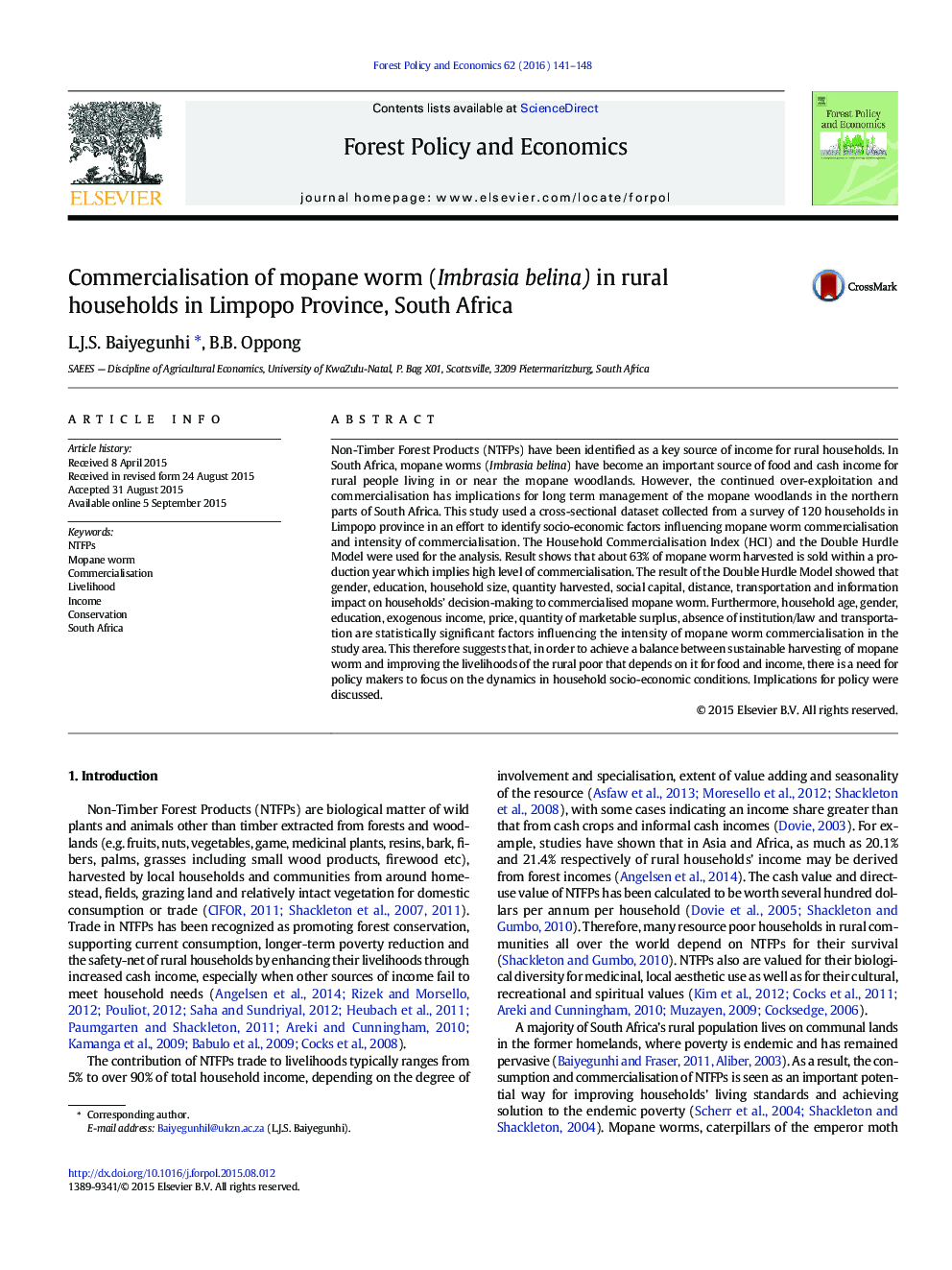| کد مقاله | کد نشریه | سال انتشار | مقاله انگلیسی | نسخه تمام متن |
|---|---|---|---|---|
| 6544915 | 159834 | 2016 | 8 صفحه PDF | دانلود رایگان |
عنوان انگلیسی مقاله ISI
Commercialisation of mopane worm (Imbrasia belina) in rural households in Limpopo Province, South Africa
دانلود مقاله + سفارش ترجمه
دانلود مقاله ISI انگلیسی
رایگان برای ایرانیان
کلمات کلیدی
موضوعات مرتبط
علوم زیستی و بیوفناوری
علوم کشاورزی و بیولوژیک
جنگلداری
پیش نمایش صفحه اول مقاله

چکیده انگلیسی
Non-Timber Forest Products (NTFPs) have been identified as a key source of income for rural households. In South Africa, mopane worms (Imbrasia belina) have become an important source of food and cash income for rural people living in or near the mopane woodlands. However, the continued over-exploitation and commercialisation has implications for long term management of the mopane woodlands in the northern parts of South Africa. This study used a cross-sectional dataset collected from a survey of 120 households in Limpopo province in an effort to identify socio-economic factors influencing mopane worm commercialisation and intensity of commercialisation. The Household Commercialisation Index (HCI) and the Double Hurdle Model were used for the analysis. Result shows that about 63% of mopane worm harvested is sold within a production year which implies high level of commercialisation. The result of the Double Hurdle Model showed that gender, education, household size, quantity harvested, social capital, distance, transportation and information impact on households' decision-making to commercialised mopane worm. Furthermore, household age, gender, education, exogenous income, price, quantity of marketable surplus, absence of institution/law and transportation are statistically significant factors influencing the intensity of mopane worm commercialisation in the study area. This therefore suggests that, in order to achieve a balance between sustainable harvesting of mopane worm and improving the livelihoods of the rural poor that depends on it for food and income, there is a need for policy makers to focus on the dynamics in household socio-economic conditions. Implications for policy were discussed.
ناشر
Database: Elsevier - ScienceDirect (ساینس دایرکت)
Journal: Forest Policy and Economics - Volume 62, January 2016, Pages 141-148
Journal: Forest Policy and Economics - Volume 62, January 2016, Pages 141-148
نویسندگان
L.J.S. Baiyegunhi, B.B. Oppong,